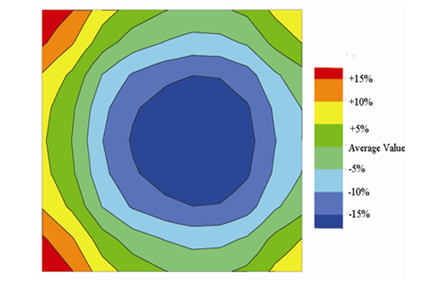Numerical Simulation of Film Growth from Vapor Phase
A comprehensive mathematical model is developed for silicon carbide halide chemical vapor deposition process including gas dynamics, heat and mass transfer, gas-phase and surface chemical reaction mechanism, and radio-frequency induction heating. The governing equation system of this model is discretized by finite volume method, and solved by iterative solver to predict the thermal and flow field, gas composition and film deposition rate. Two-dimensional axisymmetric simulations of the deposition process in a horizontal hot-wall reactor using silicon tetrachloride, propane, and hydrogen as precursors are performed over a wide range of operational parameters to quantify the effects of deposition temperature, precursor flow rate and reactor configuration. Special attention is directed to the etching of silicon carbide films by hydrogen chloride and its impact on the film deposition rate at different processing conditions. Simplified chemical reaction mechanism is obtained using two-dimensional study, which makes the three-dimensional simulation feasible using available computing resource. Three-dimensional simulation is performed to address issues such as the film uniformity and the effects of buoyancy flow and deposition pressure on the film growth. Modified reactor design and process parameters are examined for controlling the reactive gas flow in a reactor chamber and enhancing the deposition rate. Our simulation shows that the formation of hydrogen chloride and the associated etching effect can be reduced by employing a modified gas delivery system.
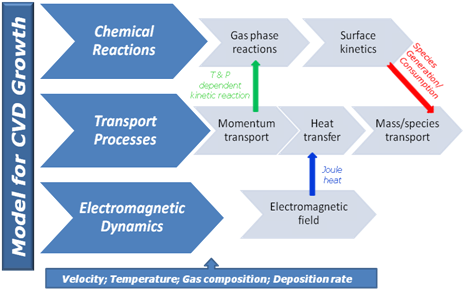 Numerical model for chemical vapor deposition process
Numerical model for chemical vapor deposition process
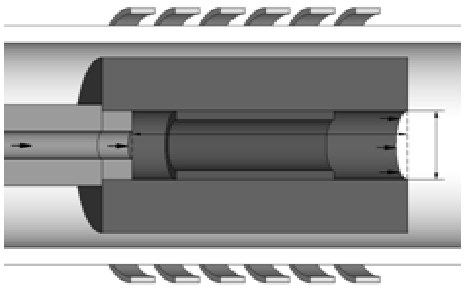 Geometry of a chemical vapor deposition reactor
Geometry of a chemical vapor deposition reactor
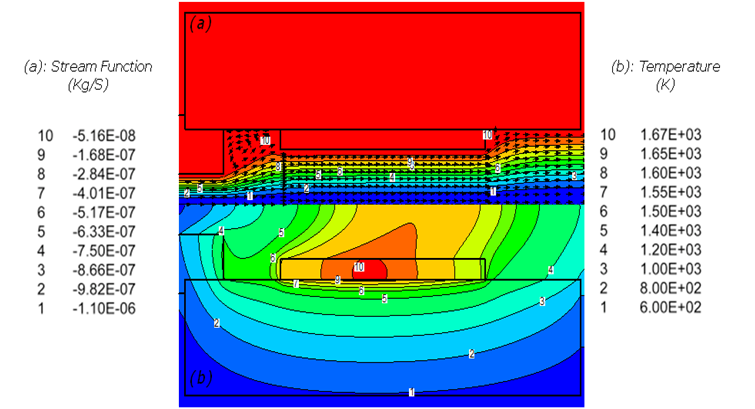 Distributions of velocity and temperature in a reactor
Distributions of velocity and temperature in a reactor
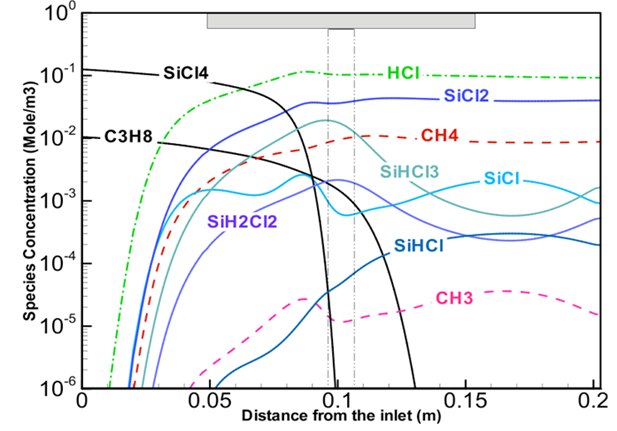 Molar concentration of major species along the axial centerline of the reactor at the temperature of 1673K and presssure of 200 Torr.
Molar concentration of major species along the axial centerline of the reactor at the temperature of 1673K and presssure of 200 Torr.
Predicted film uniformity distribution on a 1cm x 1cm substrate
